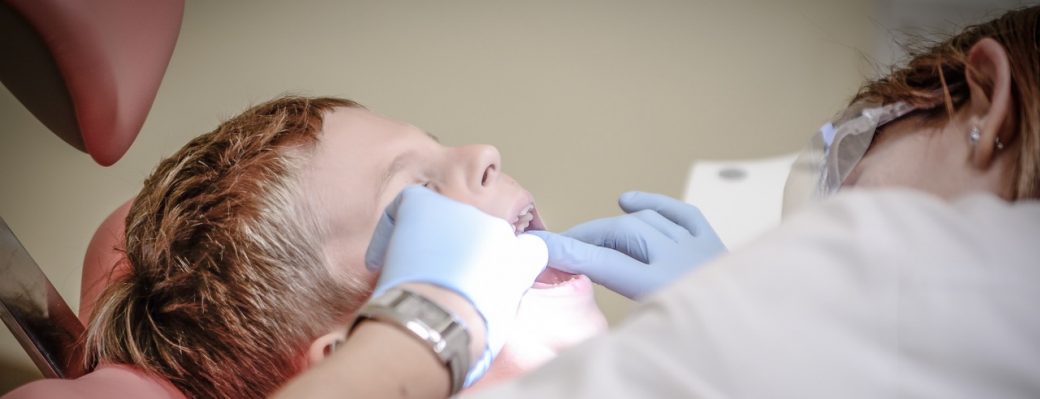In the realm of ophthalmology, proparacaine eye drops stand out as a pivotal tool for facilitating a variety of various eye exams and procedures. This article aims to explore proparacaine eye drops, focusing on their role, usage, and importance in eye care. From routine examinations to complex surgeries, understanding how these drops work to provide temporary anesthesia is crucial for both professionals and patients. Join us as we delve into the world of proparacaine, unveiling its critical role in modern eye care practices.
Introduction to Proparacaine Eye Drops: Understanding Their Role in Eye Care
Proparacaine eye drops are a cornerstone drug in ophthalmic care, serving as a topical ophthalmic anesthetic widely used in various eye procedures. Understanding the role and significance of proparacaine hydrochloride in eye care is essential for both healthcare professionals and patients.
- Function as a Topical Anesthetic: Proparacaine hydrochloride ophthalmic solution acts as a local anesthetic, numbing the eye’s surface for short-term procedures. It works by blocking nerve signals in the eye, temporarily relieving pain or discomfort during examinations or treatments.
- Versatile Application in Ophthalmology: These drops are used in various ophthalmic procedures, from routine eye exams to more complex processes like foreign body removal. Their ability to provide quick and effective anesthesia makes them indispensable in many ophthalmic settings.
- Chemical Composition and Action: The active ingredient, proparacaine hydrochloride, limits sodium ion permeability in nerve membranes, leading to a loss of sensation in the corneal epithelium. This temporary numbing effect allows for a smoother and less discomforting experience during eye-related procedures.
- Importance in Ophthalmic Diagnostics and Treatment: Proparacaine eye drops facilitate accurate diagnostics and effective treatment by providing a pain-free environment, ensuring patient comfort and compliance during potentially uncomfortable procedures.
- Accessibility and Ease of Use: These drops are easily administered by healthcare professionals, offering a straightforward and efficient solution for ocular anesthesia.
How Proparacaine Eye Drops Work: The Science Behind the Anesthesia
Understanding how proparacaine eye drops work involves delving into the science behind this widely used topical ophthalmic anesthetic. These drops play a crucial role in eye care by temporarily numbing the ocular surface facilitating various procedures and treatments.
- Chemical Mechanism of Action: Proparacaine hydrochloride, the active ingredient in these eye drops, inhibits sodium ion permeability in nerve cells. This action blocks the nerve impulses that signal pain and discomfort in the eye, effectively numbing the area.
- Rapid Onset of Anesthesia: Upon application, proparacaine eye drops quickly penetrate the corneal epithelium, the eye’s outermost layer. The anesthesia effect typically begins within 30 seconds to a minute, providing immediate relief and facilitating quick commencement of ophthalmic procedures.
- Duration of Effect: The numbing effect of proparacaine eye drops is temporary, usually lasting 15 to 20 minutes. This short duration is ideal for most ophthalmic procedures, allowing enough time for completion without prolonged impairment of sensation.
- Selective Anesthetic Action: Unlike some local anesthetics, proparacaine is selective in its action, primarily affecting the eye’s surface. This specificity ensures that deeper structures of the eye remain unaffected, maintaining overall ocular function during procedures.
- Use in Various Ophthalmic Procedures: The rapid and temporary numbing effect of proparacaine makes it suitable for various ophthalmic uses, from routine examinations to minor surgical procedures like foreign body removal or suture placement.
- Safety Profile: Proparacaine eye drops are generally safe and effective when used as directed by a healthcare professional. However, like all medications, they must be used with caution, especially considering potential allergic reactions or adverse effects.
Common Uses and Procedures Involving Proparacaine Eye Drops

Proparacaine eye drops are extensively utilized in various ophthalmic procedures owing to their effective anesthetic properties. These drops facilitate a range of eye-related examinations and treatments by providing temporary numbness to the ocular surface, ensuring patient comfort and compliance.
Uses of Proparacaine Eye Drops:
- Routine Eye Examinations: In standard ophthalmic check-ups, proparacaine eye drops are used to numb the eye, allowing for more comfortable intraocular pressure testing, such as in tonometry, and detailed examination of the eye’s surface without causing discomfort to the patient.
- Foreign Body Removal: One of the most common uses of proparacaine drops is during the removal of foreign bodies from the eye. The anesthetic effect allows painless extraction, which is essential for patient comfort and cooperation.
- Suture Placement and Removal: In minor surgical procedures involving sutures, either post-injury or post-operatively, these drops provide the necessary anesthesia to perform suture placement or removal without causing pain.
- Diagnostic Procedures: Certain diagnostic tests, such as gonioscopy or corneal staining, require the patient to remain still and comfortable, a feat achieved more easily with the numbing effect of proparacaine.
- Laser Eye Surgeries: Before laser procedures, such as LASIK or photorefractive keratectomy (PRK), proparacaine eye drops are applied to ensure that the patient is not uncomfortable during the surgery.
- Treatment of Minor Eye Injuries: These drops provide temporary relief during the initial examination and treatment for minor corneal abrasions or injuries.
Safety and Side Effects: What Patients Need to Know
While proparacaine eye drops serve as a valuable tool in ophthalmology, it is paramount for patients to be well-informed about their safety profile and potential side effects. This awareness ensures a cautious and informed approach, maximizing potential benefits while minimizing risks.
- Allergic Reactions: Although rare, allergic reactions to proparacaine may occur, presenting as redness, swelling, or severe discomfort in the eye. It is crucial to communicate any known allergies to healthcare professionals before use.
- Short-term Side Effects: Common side effects encompass a fleeting stinging or burning sensation immediately after application, usually subsiding within minutes. Some individuals may also experience temporary blurred vision or light sensitivity.
- Risks of Prolonged Use: Extended or repeated use of proparacaine eye drops can result in more severe side effects, such as damage to the corneal epithelium, delayed healing, or even permanent corneal opacification. As such, these drops should only be utilized under professional supervision.
- Precautions with Contact Lenses: Contact lens wearers should exercise caution, as the drops can impact lens integrity. It is advisable to remove contact lenses before application and wait for the anesthetic effect to wear off before reinsertion.
- Interactions with Other Medications: Patients should inform their healthcare provider about any other eye medications they use, as proparacaine can interact with other drugs, potentially altering their effectiveness or exacerbating side effects.
- Use in Pediatric Patients: The use of proparacaine in children requires careful consideration and supervision due to a higher risk of systemic absorption and subsequent effects in younger patients. Parents and caregivers should diligently approach these eye drops in pediatric patients and under professional guidance.
Proper Application and Care Tips for Using Proparacaine Eye Drops

Ensuring the effectiveness and safety of proparacaine eye drops hinges on proper application and care, with patients and healthcare providers adhering to specific guidelines to maximize therapeutic benefits while minimizing potential risks.
- Sterility Maintenance: Preventing contamination is paramount, so always ensure the dropper tip avoids contact with any surface, including the eye or hands, to maintain the sterility of the eye drops and avert infections.
- Correct Application Technique: Tilt the head slightly backward, pull down the lower eyelid to create a small pocket, hold the dropper above the eye, look up, and gently squeeze a drop. Close the eye gently for a minute or two to facilitate even spreading of the solution.
- Avoiding Overuse: Strictly adhere to the prescribed usage of proparacaine eye drops by healthcare professionals. Overuse can lead to serious side effects, including damage to the corneal epithelium and delayed healing.
- Monitoring for Adverse Reactions: Stay vigilant for signs of adverse reactions, such as prolonged irritation, redness, or vision changes. If these symptoms occur, immediate consultation with a healthcare professional is crucial.
- Storage and Handling: Keep the eye drops in a cool, dry place away from direct sunlight, out of reach of children. Adhere to the expiration date, and discard if the solution becomes cloudy or discolored.
- Consultation Before Use: Before initiating proparacaine eye drops, particularly for individuals with pre-existing eye conditions or those using other ophthalmic medications, seeking consultation with a healthcare professional is essential. This step ensures a thorough understanding of potential interactions and appropriateness of use in the specific medical context.
- Use in Special Populations: When considering the application of these drops in special populations such as pediatric patients, the elderly, or individuals with pre-existing cardiac conditions, an extra layer of caution is necessary. Diligence in application and continuous monitoring becomes paramount to account for potential heightened susceptibility to side effects in these specific groups.
In conclusion, understanding the proper application and care for proparacaine eye drops is essential in ensuring their safe and effective use in ophthalmic procedures. By adhering to guidelines for application, storage, and monitoring for adverse reactions during ophthalmic use, patients can confidently benefit from the anesthetic properties of proparacaine eye drops, making eye care experiences more comfortable and efficient.
References
Proparacaine Ophthalmic Route Side Effects
https://www.mayoclinic.org/drugs-supplements/proparacaine-ophthalmic-route/side-effects/drg-20074767?p=1
DailyMed – Proparacaine Hydrochloride Solution
https://dailymed.nlm.nih.gov/dailymed/fda/fdaDrugXsl.cfm?setid=447a2a64-0507-4fe8-bb44-cc36c3916151&type=display
Proparacaine Uses, Side Effects & Warnings
https://www.drugs.com/pro/proparacaine.html
Pain-Relieving Eye Drops: Proparacaine and Tetracaine
https://www.aao.org/eye-health/treatments/pain-relieving-eye-drops
Eye Numbing Drops: Uses and Side Effects
https://www.healthline.com/health/eye-numbing-drops


